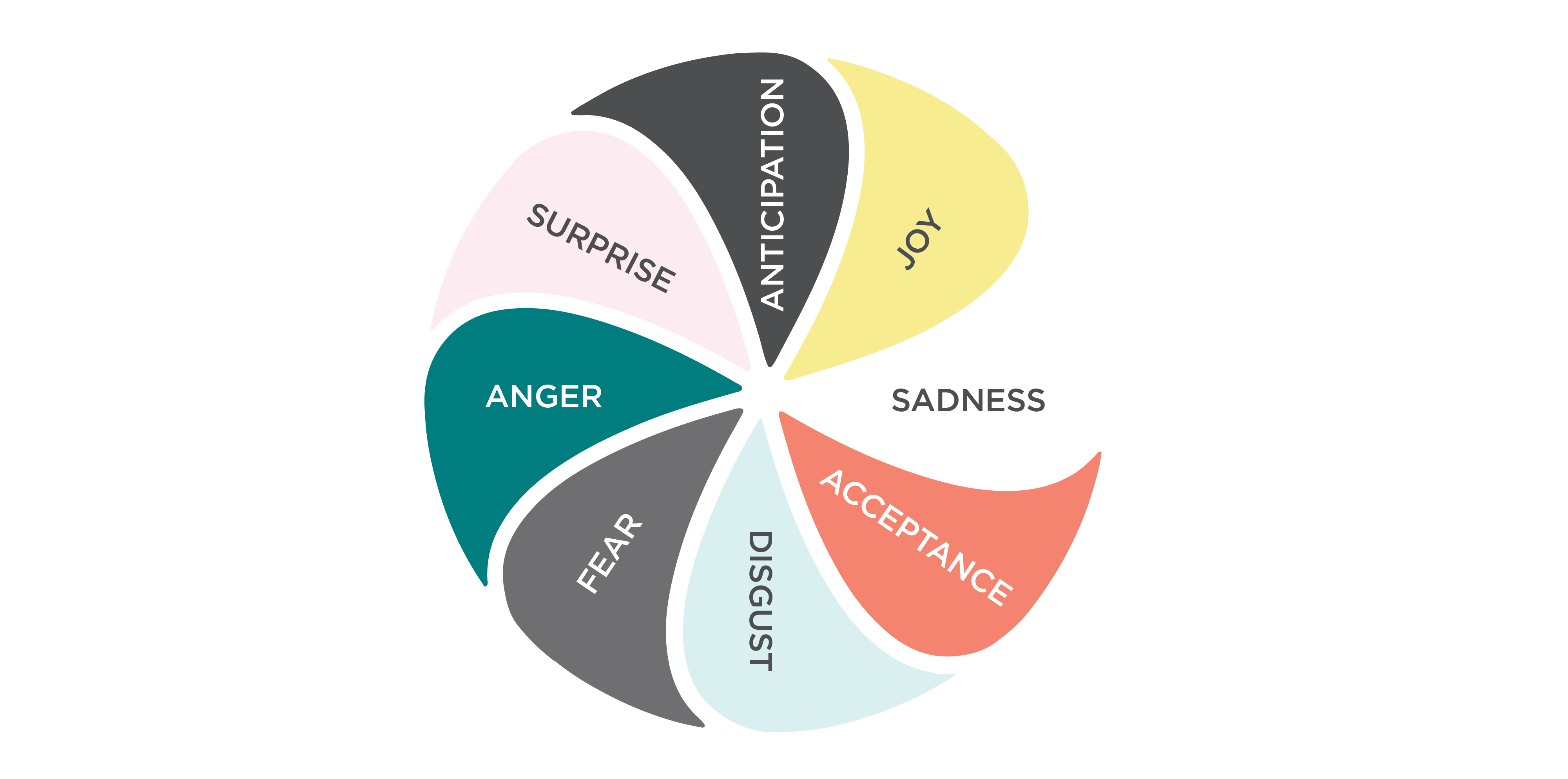We’ve all come to experience the confusing nature of emotions in the workplace.
While most adults are largely in control of what they feel, emotions can nevertheless be overwhelming—especially during periods of personal or global upheaval.
American psychologist
Dr. Robert Plutchik developed a method for simplifying human emotions, however. He proposed that there are eight primary emotions that serve as the foundation for all other emotions:
- (1) joy
- (2) sadness
- (3) acceptance
- (4) disgust
- (5) fear
- (6) anger
- (7) surprise
- (8) anticipation
We can identify these eight primary emotions and deal with them much more easily than we can the full gambit of
34,000 distinct emotions which have been recorded. Plutchik even placed these emotions in a particular format, Plutchik’s wheel of emotions, and his framework helps bring clarity to one’s emotions and better defines the physiological purpose of each.
How the Emotion Wheel Works
Of the eight foundational emotions Plutchik identified on his emotion wheel, he grouped them into four pairs of opposites: joy and sadness, acceptance and disgust, fear and anger, surprise and anticipation.
While these are the most basic of emotions, you can add these emotions together to produce other combinations—for example, joy + fear = guilt. You can think of your emotions, then, as being permutations of these main eight.
But the feelings wheel also goes further, showcasing how these basic emotions can change depending on the intensity of your feelings, too. So, fear can go from timidity to terror, for example. Plutchik’s wheel further
uses colors to signify similar emotions and to highlight the intensity of certain emotions above others.
Ultimately, Plutchik’s wheel allows the user to visualize their emotions, adding to their toolkit when it comes to expressing oneself clearly and concisely. This is obviously incredibly useful in relationships, whether with parents or friends or romantic partners, but Plutchik’s wheel of feelings can also be used in the workplace.
Why Emotions Matter at Work
Now, why do emotions matter in the workplace? After all, professionalism practically demands that we erase all emotion and operate from a place of no bias. But the reality is far from that. For one, emotions are crucial in workplaces that deal with customers.
While professionalism is key, being able to tap into your emotions and
empathize with a customer is almost definitely going to lead to a better outcome. Emotions can allow you to better connect with a coworker so that you’re able to lean on your teammates during difficult times.
Moreover, workplaces that better encourage their employees to tap into their emotions, connect, and
feel vulnerably safe often have better retention rates. A diverse and inclusive workplace should make room for emotion since we’re not robots—yet—and humans have a wide range of emotional capacity. So, the bottom line?
We can’t escape emotions at work, even if we’ve been conditioned to do so. If emotions are going to exist in the workplace, then, it makes sense to build an arsenal of tools to deal with those emotions when they crop up in
stressful situations.
5 Ways the Emotion Wheel Can Help You Navigate Stressful Work Situations
It Helps You to Slow Down and Evaluate Your Response
Plutchik’s wheel of emotions isn’t solely useful in the workplace but using it in your life can help to make
difficult situations at the office easier to deal with. By visualizing the wheel, you’re likely already slowing down and taking more time to evaluate your response to a testy coworker or a
passive-aggressive teammate. While we can’t control the feelings or actions of those around us, we can control how we react and the emotion wheel helps with precisely that.
Often,
stressful situations at work seem all the more overwhelming as your livelihood and paycheck are linked to the outcome of them, versus a situation in your personal life. But the feelings wheel can make your emotions much more manageable in these scenarios.
You Can Learn How to Harness Your Emotions Rather Than Suppressing Them
As mentioned previously, the narrative we often grow up with is to suppress emotions in the workplace. The office is meant to be for professionalism alone, but Plutchik’s wheel can help you to
tap into your emotions in the workplace without feeling overwhelmed or causing a scene.
You can harness what you feel and use it to fuel you, and your professional relationships, propelling you into
better networking opportunities, promotions, and even more instances of advocating for what you really want versus what others want you to be doing.
It Gives You a Visual Manifestation of What Others Could Be Feeling, Too
It Allows You to Better Understand Office Politics
Every office has politics, there’s no denying it. And, let’s be honest, it’s overwhelming. But, when you are in better control of your own emotions, you can better understand and tap into what others are feeling with their verbal and non-verbal cues versus solely focusing on your own feelings.
You Can Better Understand How to Cultivate a Particular Work Environment That Incites the Emotions You Hope to Elicit in Your Coworkers
If you want your coworkers to think favorably of you, feel festive for a holiday party, or just tap into a feeling of camaraderie, the emotion wheel can help. By better understanding how certain feelings arise as a result of particular external factors, you can better control the feelings others have based on
influencing the environment.
While this can help if there’s a stressful deadline and your team needs to be part of a safe environment so they can focus, it can also help if there’s a rift between a few teammates and you need to facilitate a resolution.
Create Your Own Emotion Wheel—We Made A Template!
Are there core emotions that you feel more in line with? Consider creating your own emotion wheel to suss out how you're feeling and what to do to embrace and navigate your own emotions at work.













